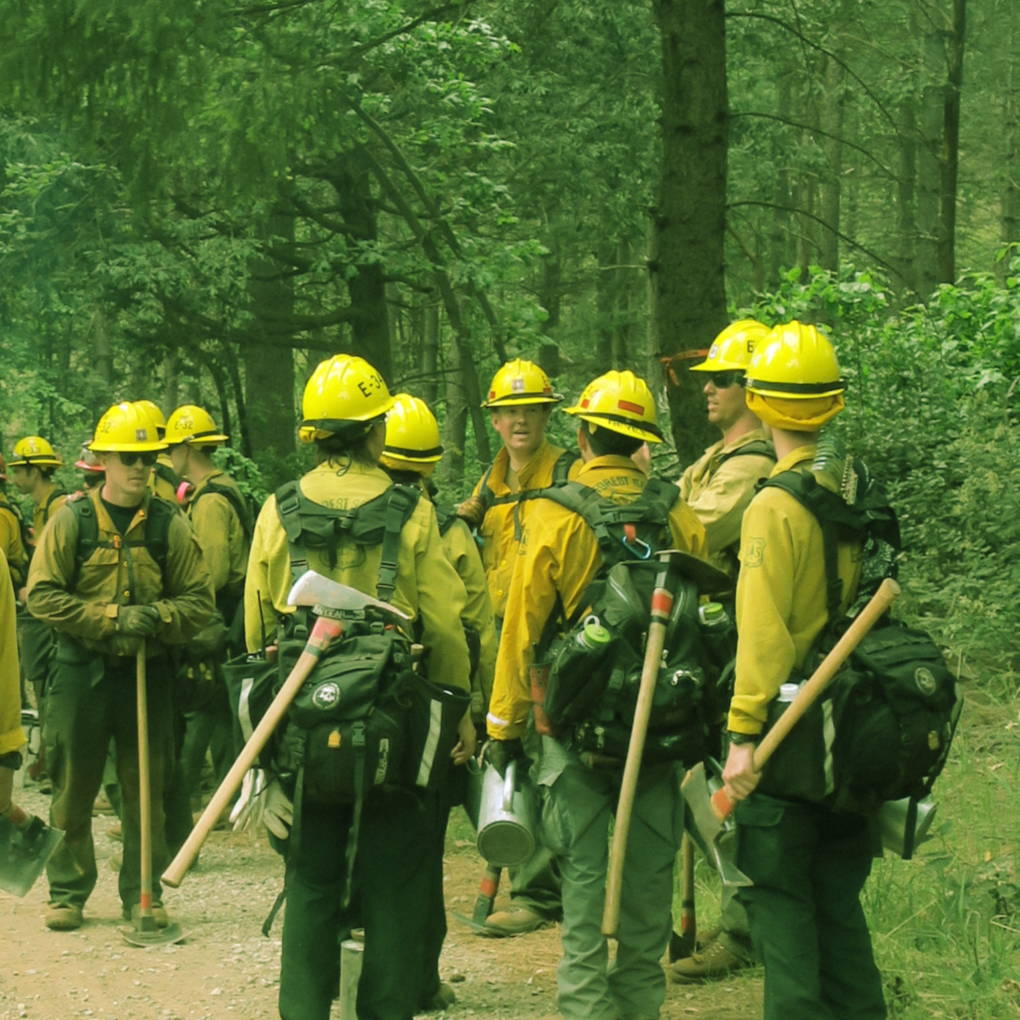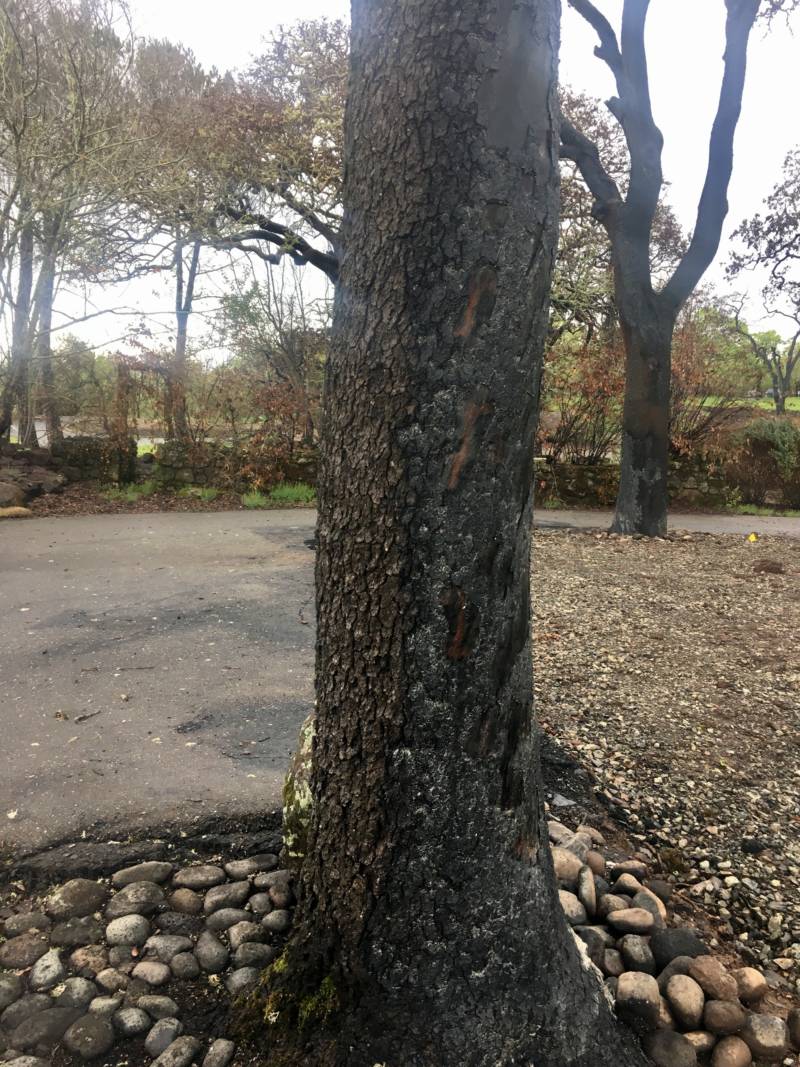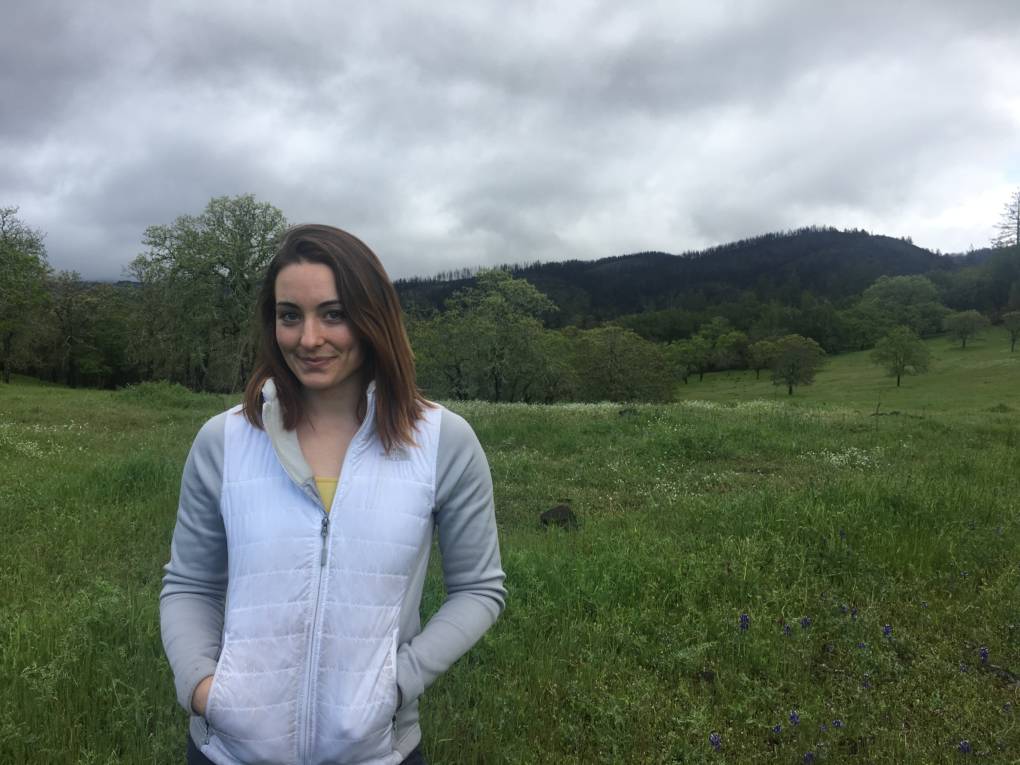Player FM ऐप के साथ ऑफ़लाइन जाएं!
Why California’s Best Strategy Against Wildfire Is Hardly Ever Used
Manage episode 227726007 series 2486058
With climate change, wildfires threaten disaster and chaos in more California communities, more often. But experts say it’s possible to avoid catastrophic harm to human and forest health by setting planned burns before human error, lightning or arson choose when fires start.
[contextly_sidebar id=”jxcGO35mXk1KJYVaQ7fcALHMXXhgpY5X”]“Putting prescribed fire back out on the landscape at a pace and scale to get real work done and to actually make a difference is a high priority,” says Cal Fire chief Ken Pimlott. “It really is, and it’s going to take a lot of effort.”
‘Unprecedented Catastrophe’
In a February report, the watchdog Little Hoover Commission concluded that the way California landowners have collectively managed forests is an “unprecedented catastrophe.” In May, Gov. Jerry Brown issued an executive order to improve forest management, and with it, a dramatic change.
Now Pimlott says that Cal Fire intends to triple the amount of prescribed fire on lands the state controls.
“We can prevent these large catastrophic fires or at least reduce the intensity when fires do occur,” he says. “So a little bit of smoke now and a little bit of inconvenience now is well worth offsetting these large damaging fires.”
That’s a small step toward addressing a major deficit. According to the commission’s report, an area the size of Maryland—including state, private and federal land—needs maintenance or planned fire to become healthier.
One day of prescribed burning in the Tahoe National Forest offers a glimpse of the difficulties in completing these projects.
Easier Said Than Done
U.S. Forest Service wildland firefighters hacked a line into the earth, around a patch of land on the Yuba River District near Pendola, overlooking Bullard’s Bar for one day of work. A “hot shot” crew and crew members from two engine companies gathered for the day’s work.

“This day started a few years back,” Jennifer Hinckley laughs dryly. Hinckley is a fire and fuels specialist for the Tahoe National Forest. And she does a lot of paperwork: before the first torch even can drip fire on the ground, federal law requires extensive environmental review.
Even with approval, federal wildland managers waited months for the right weather and environmental conditions here. Hinckley says those criteria range from wind speed and temperature, to how much water is in the soil. It was a very wet spring; on-and-off rains created several months of delay here.
Thick vegetation in the understory is a limiting factor, too. Hinckley says her crews often need to chop and flatten vegetation to make safe conditions for burning.
Even when all of the stars align, Hinckley says she might not have warm bodies for the job. That happened last fall, when fires up and down the state kept fire crews hamstrung.
“I didn’t have crews to perform prescribed burns,” she says, “because the wildfires take priority.”
Even when the permit is done and the weather is right and crews are available, the air might already be too polluted to add more smoke to the mix. Air regulators grant permission for burn days, and it’s hard to get: regional atmospheric conditions mean that smoke from Sierra Nevada forests funnels toward the central valley, where air pollution is consistently bad.
Balancing Forest and Human Health
Whether from wildfire or planned burn, smoke feels like pollution to vulnerable lungs.
“The consequences are the same in terms of patient response,” says Fresno-based asthma and allergy specialist Praveen Budigga. “I mean, patients are going to have the same effects of the fire.”
State and regional air boards say they’re working to balance forest and human health.
“We have to protect public health; that’s our mandate,” says Dar Mims, a meteorologist with the California Air Resources Board. “But we also recognize that we need burning in the forest, and a lot of those trade-offs have to happen in real time because the decisions have to be made—do we want to potentially impact the air basin, or do we want to burn.”
Air regulators and fire officials say that to promote prescribed burns will require better public education about their relative hazards. Last year, a groundbreaking study concluded that wildfire smoke contains three times as much pollution as smoke from prescribed fires.
CalFire’s Ken Pimlott says that’s reason to push for more burn days.
“We want the ability to have some more flexibility to be able to burn on days [when] maybe it’s not quite as close to an air quality attainment day as one would like but it’s a perfect prescription window,” he says. “Say we have the resources available and the temperatures and humidities and wind—all of those, vegetation, are all in alignment to make a perfect burn and so we want the ability have a little flexibility.”

Bringing Fire to a Healthier Landscape
Evidence of the ecological benefits of fire are visible at the Bouverie Preserve, a wildland area in Sonoma County. Beginning in spring, a living carpet of purple lupine, white popcornflower, yellow fiddleneck unrolled across the preserve’s fields and canyons.
“It’s lush and green with wildflowers. It’s pretty beautiful,” says fire ecologist Sasha Berleman. To her, this off-the-charts growth signals a healthy landscape, where wildflowers followed the fire in short order.
But look closer at the trees, she says, pointing out how the heat of the Nuns fire blackened the ground and charred the oaks, their trunks scarred with flames up to six feet high. Berleman wonders whether the fire needed to be that severe.
“With that wind event that we had, it’s not that this fire is completely preventable but we could have probably had an impact on the behavior of the fire within the area that burned,” she reflects.
To see how, she points across the path, to a 17.5-acre plot where she lit a prescribed fire last May. Those trees remained green. Flames were only inches high. These lands will recover faster.
“They might have not burned so hot or so extreme in the oak woodlands if we had been managing them on a regular basis,” Berleman says.

She also thinks more planned burns could have saved Bouverie’s buildings. That hot and extreme fire torched all but one of them. Berleman went back to the preserve as the fire raged. She and two men were able to save that last building, David Bouverie’s own, using a bucket, a shovel and a chain.
“So now that building has a special place in my heart,” she laughs. “We spent a good 24 hours together.”
Berleman now works as a consultant, promoting the use of ecologically applied fire for private clients and the East Bay Regional Park District, among others. Paradoxically this summer, she’s deploying her “hot shot” training as a wildland firefighter, where the job is to stamp fires out.
“I felt like we’re sometimes putting out fires that were doing good work. Just because that’s what the machine does,” Berleman says. “That’s what we do, put out fires.”
Her hope is to reconcile the conflicting aims of these jobs, and the relationship between fire and California’s landscape, to get scientists and wildland managers heading in the same direction.
In Harm’s Way
Craig Thomas, conservation director for the Sierra Forest Legacy, says in the last 25 years, that’s become easier to do. But during those years, Thomas points out a different challenge has been growing: more people have moved into wildlands from cities.
“There is a, you know, thinking that a landscape is like a photograph,” he says ruefully. “You know, when you have these big beautiful trees and we want to freeze-frame them.”
Thomas argues that’s a bad idea. Fire is a natural disturbance, he says, “a process that is every bit as much of the picture of where you land as the trees are.”
For him, the forests are a movie, not a picture. Trees have a starring role, but so does fire. And it doesn’t have to be the bad guy in a summer blockbuster.
65 एपिसोडस
Manage episode 227726007 series 2486058
With climate change, wildfires threaten disaster and chaos in more California communities, more often. But experts say it’s possible to avoid catastrophic harm to human and forest health by setting planned burns before human error, lightning or arson choose when fires start.
[contextly_sidebar id=”jxcGO35mXk1KJYVaQ7fcALHMXXhgpY5X”]“Putting prescribed fire back out on the landscape at a pace and scale to get real work done and to actually make a difference is a high priority,” says Cal Fire chief Ken Pimlott. “It really is, and it’s going to take a lot of effort.”
‘Unprecedented Catastrophe’
In a February report, the watchdog Little Hoover Commission concluded that the way California landowners have collectively managed forests is an “unprecedented catastrophe.” In May, Gov. Jerry Brown issued an executive order to improve forest management, and with it, a dramatic change.
Now Pimlott says that Cal Fire intends to triple the amount of prescribed fire on lands the state controls.
“We can prevent these large catastrophic fires or at least reduce the intensity when fires do occur,” he says. “So a little bit of smoke now and a little bit of inconvenience now is well worth offsetting these large damaging fires.”
That’s a small step toward addressing a major deficit. According to the commission’s report, an area the size of Maryland—including state, private and federal land—needs maintenance or planned fire to become healthier.
One day of prescribed burning in the Tahoe National Forest offers a glimpse of the difficulties in completing these projects.
Easier Said Than Done
U.S. Forest Service wildland firefighters hacked a line into the earth, around a patch of land on the Yuba River District near Pendola, overlooking Bullard’s Bar for one day of work. A “hot shot” crew and crew members from two engine companies gathered for the day’s work.

“This day started a few years back,” Jennifer Hinckley laughs dryly. Hinckley is a fire and fuels specialist for the Tahoe National Forest. And she does a lot of paperwork: before the first torch even can drip fire on the ground, federal law requires extensive environmental review.
Even with approval, federal wildland managers waited months for the right weather and environmental conditions here. Hinckley says those criteria range from wind speed and temperature, to how much water is in the soil. It was a very wet spring; on-and-off rains created several months of delay here.
Thick vegetation in the understory is a limiting factor, too. Hinckley says her crews often need to chop and flatten vegetation to make safe conditions for burning.
Even when all of the stars align, Hinckley says she might not have warm bodies for the job. That happened last fall, when fires up and down the state kept fire crews hamstrung.
“I didn’t have crews to perform prescribed burns,” she says, “because the wildfires take priority.”
Even when the permit is done and the weather is right and crews are available, the air might already be too polluted to add more smoke to the mix. Air regulators grant permission for burn days, and it’s hard to get: regional atmospheric conditions mean that smoke from Sierra Nevada forests funnels toward the central valley, where air pollution is consistently bad.
Balancing Forest and Human Health
Whether from wildfire or planned burn, smoke feels like pollution to vulnerable lungs.
“The consequences are the same in terms of patient response,” says Fresno-based asthma and allergy specialist Praveen Budigga. “I mean, patients are going to have the same effects of the fire.”
State and regional air boards say they’re working to balance forest and human health.
“We have to protect public health; that’s our mandate,” says Dar Mims, a meteorologist with the California Air Resources Board. “But we also recognize that we need burning in the forest, and a lot of those trade-offs have to happen in real time because the decisions have to be made—do we want to potentially impact the air basin, or do we want to burn.”
Air regulators and fire officials say that to promote prescribed burns will require better public education about their relative hazards. Last year, a groundbreaking study concluded that wildfire smoke contains three times as much pollution as smoke from prescribed fires.
CalFire’s Ken Pimlott says that’s reason to push for more burn days.
“We want the ability to have some more flexibility to be able to burn on days [when] maybe it’s not quite as close to an air quality attainment day as one would like but it’s a perfect prescription window,” he says. “Say we have the resources available and the temperatures and humidities and wind—all of those, vegetation, are all in alignment to make a perfect burn and so we want the ability have a little flexibility.”

Bringing Fire to a Healthier Landscape
Evidence of the ecological benefits of fire are visible at the Bouverie Preserve, a wildland area in Sonoma County. Beginning in spring, a living carpet of purple lupine, white popcornflower, yellow fiddleneck unrolled across the preserve’s fields and canyons.
“It’s lush and green with wildflowers. It’s pretty beautiful,” says fire ecologist Sasha Berleman. To her, this off-the-charts growth signals a healthy landscape, where wildflowers followed the fire in short order.
But look closer at the trees, she says, pointing out how the heat of the Nuns fire blackened the ground and charred the oaks, their trunks scarred with flames up to six feet high. Berleman wonders whether the fire needed to be that severe.
“With that wind event that we had, it’s not that this fire is completely preventable but we could have probably had an impact on the behavior of the fire within the area that burned,” she reflects.
To see how, she points across the path, to a 17.5-acre plot where she lit a prescribed fire last May. Those trees remained green. Flames were only inches high. These lands will recover faster.
“They might have not burned so hot or so extreme in the oak woodlands if we had been managing them on a regular basis,” Berleman says.

She also thinks more planned burns could have saved Bouverie’s buildings. That hot and extreme fire torched all but one of them. Berleman went back to the preserve as the fire raged. She and two men were able to save that last building, David Bouverie’s own, using a bucket, a shovel and a chain.
“So now that building has a special place in my heart,” she laughs. “We spent a good 24 hours together.”
Berleman now works as a consultant, promoting the use of ecologically applied fire for private clients and the East Bay Regional Park District, among others. Paradoxically this summer, she’s deploying her “hot shot” training as a wildland firefighter, where the job is to stamp fires out.
“I felt like we’re sometimes putting out fires that were doing good work. Just because that’s what the machine does,” Berleman says. “That’s what we do, put out fires.”
Her hope is to reconcile the conflicting aims of these jobs, and the relationship between fire and California’s landscape, to get scientists and wildland managers heading in the same direction.
In Harm’s Way
Craig Thomas, conservation director for the Sierra Forest Legacy, says in the last 25 years, that’s become easier to do. But during those years, Thomas points out a different challenge has been growing: more people have moved into wildlands from cities.
“There is a, you know, thinking that a landscape is like a photograph,” he says ruefully. “You know, when you have these big beautiful trees and we want to freeze-frame them.”
Thomas argues that’s a bad idea. Fire is a natural disturbance, he says, “a process that is every bit as much of the picture of where you land as the trees are.”
For him, the forests are a movie, not a picture. Trees have a starring role, but so does fire. And it doesn’t have to be the bad guy in a summer blockbuster.
65 एपिसोडस
सभी एपिसोड
×प्लेयर एफएम में आपका स्वागत है!
प्लेयर एफएम वेब को स्कैन कर रहा है उच्च गुणवत्ता वाले पॉडकास्ट आप के आनंद लेंने के लिए अभी। यह सबसे अच्छा पॉडकास्ट एप्प है और यह Android, iPhone और वेब पर काम करता है। उपकरणों में सदस्यता को सिंक करने के लिए साइनअप करें।




